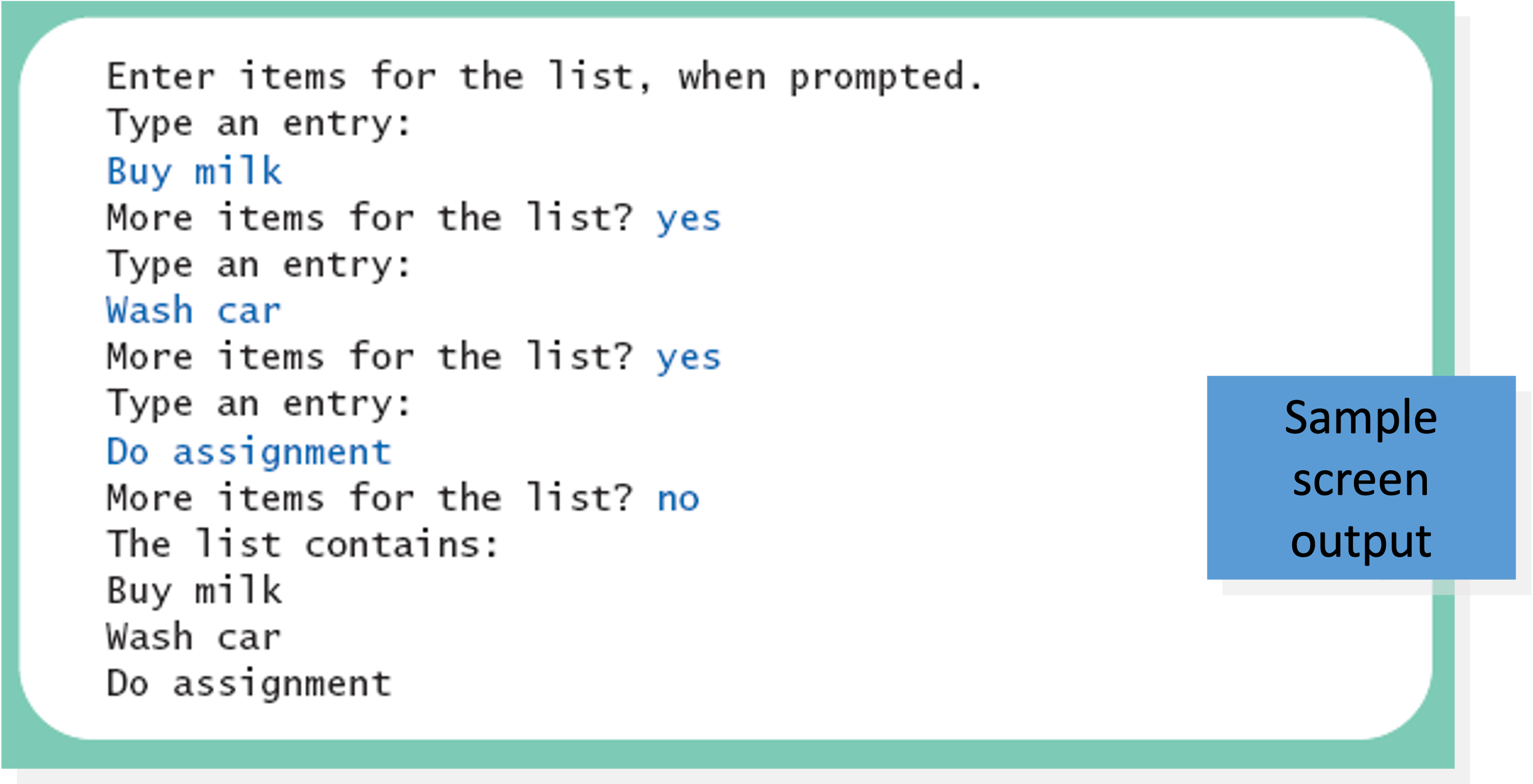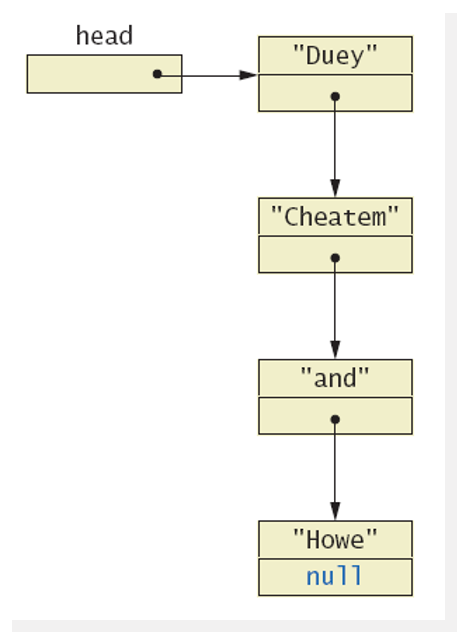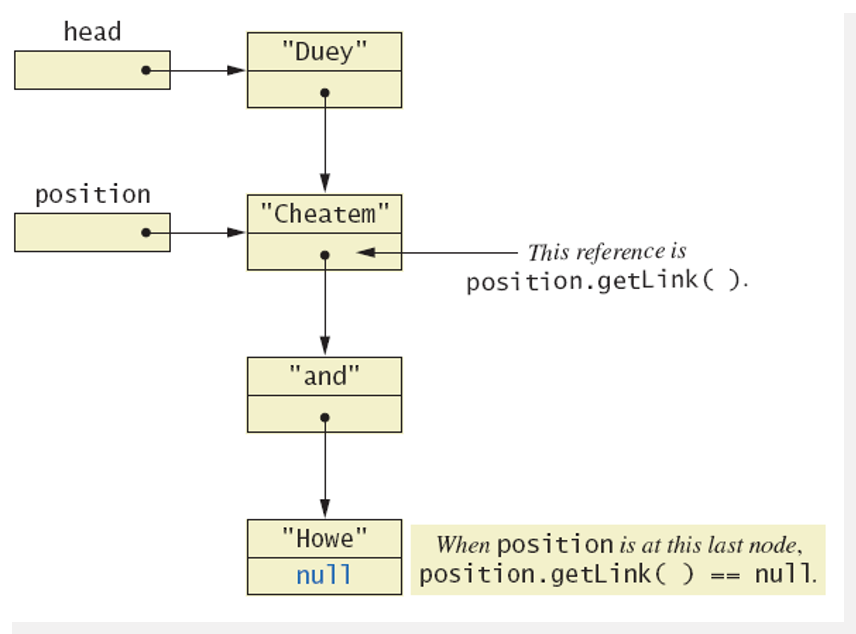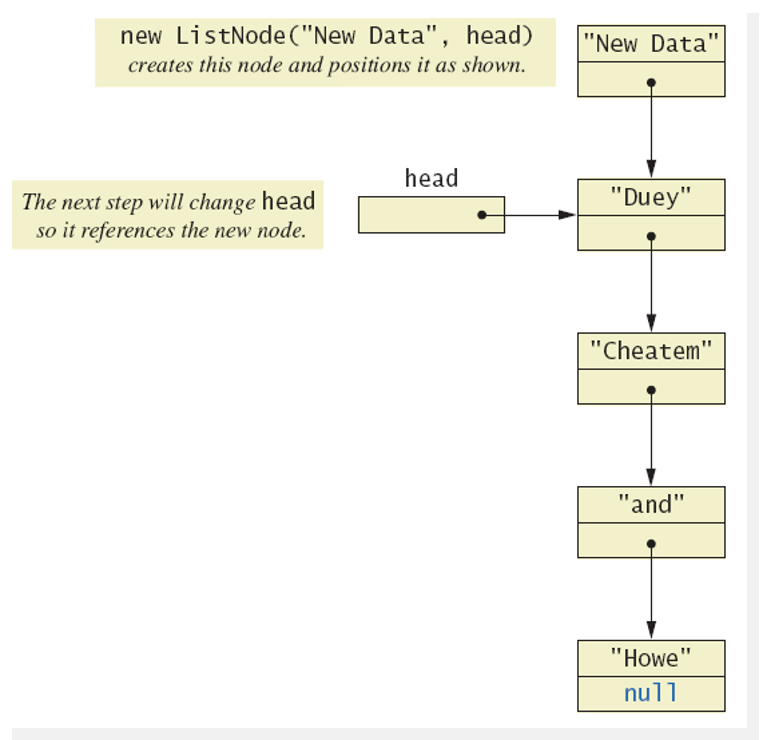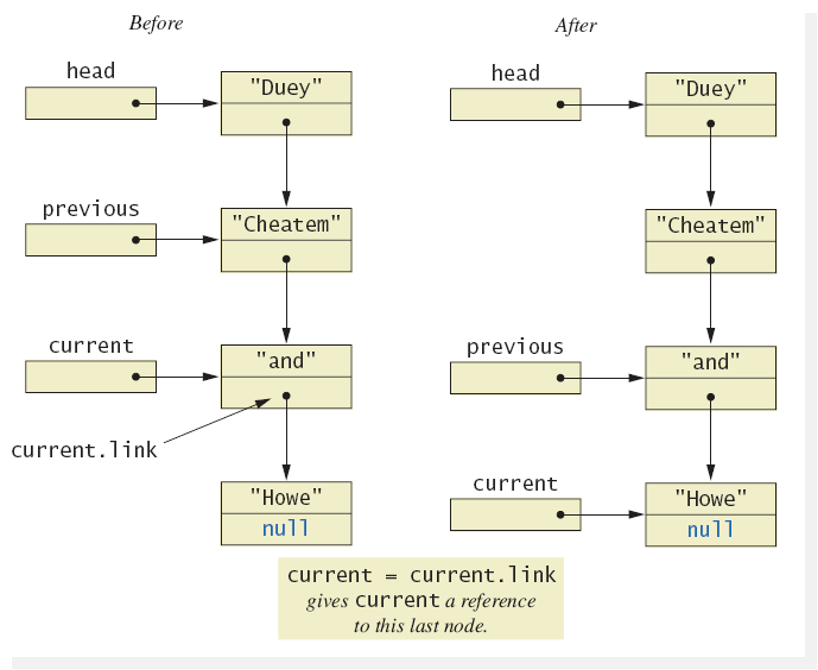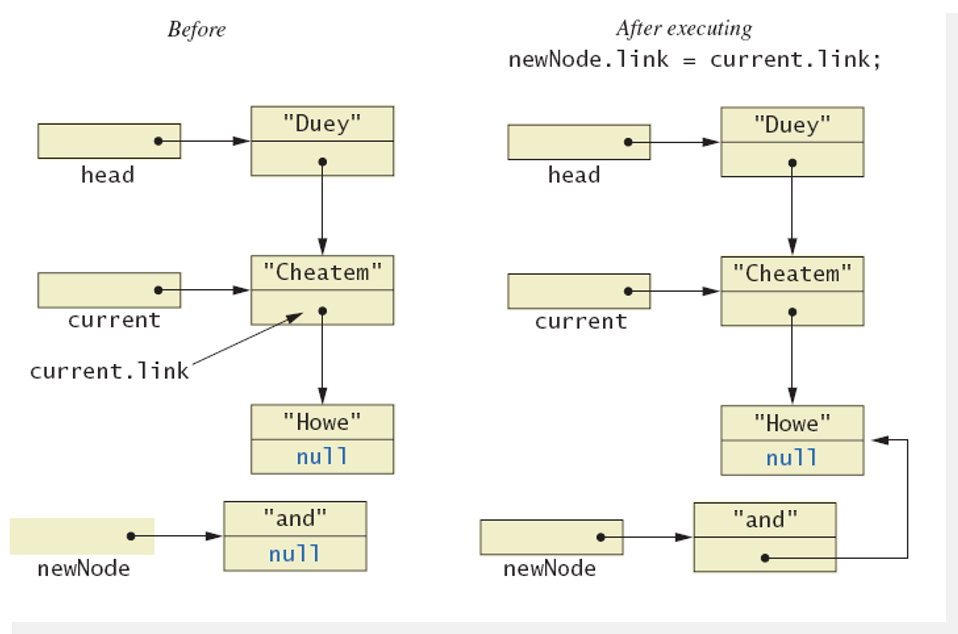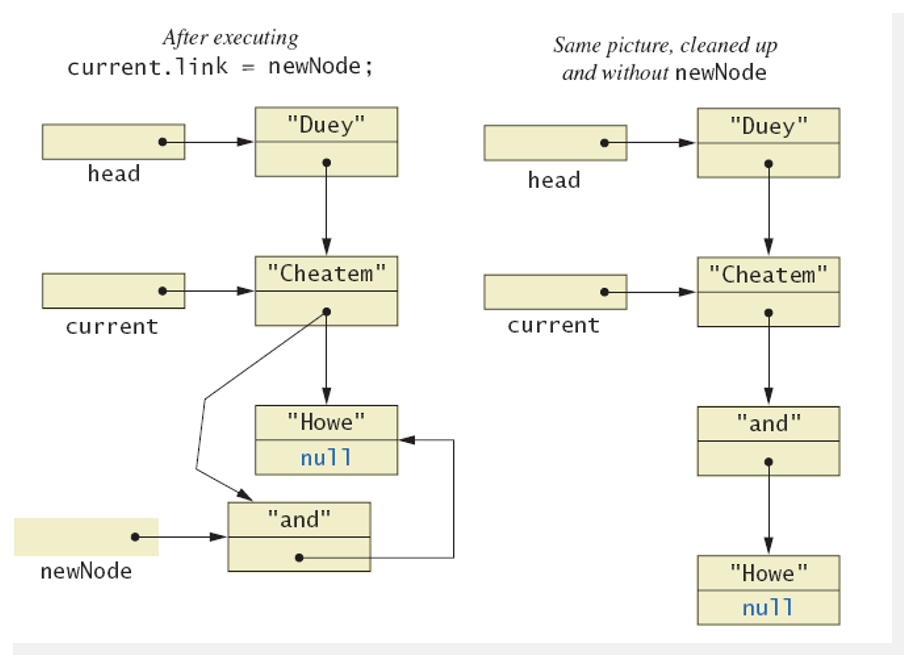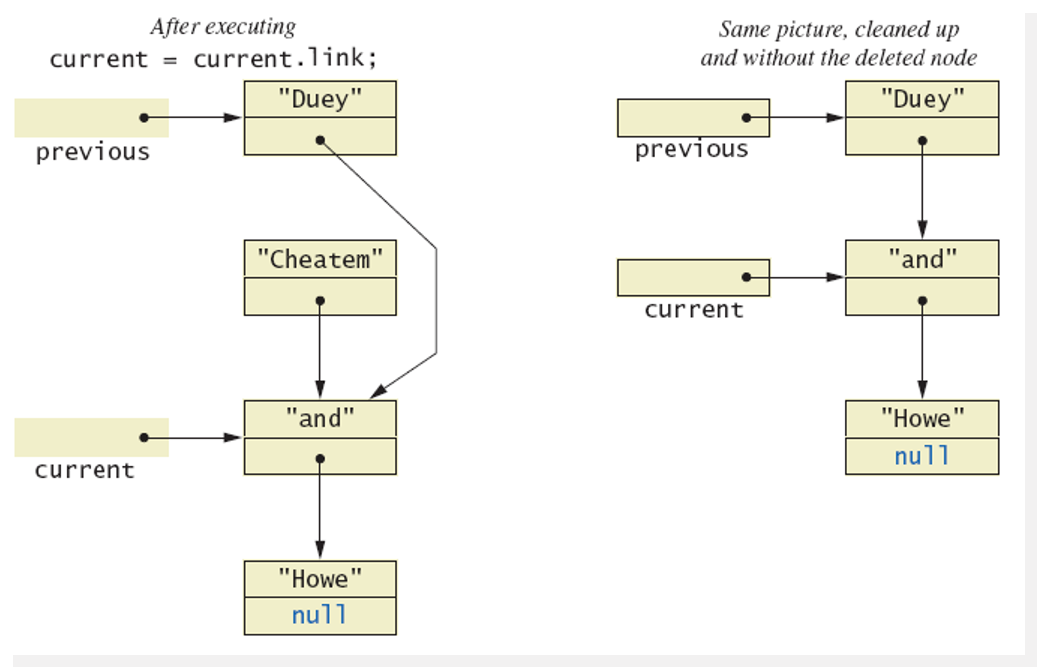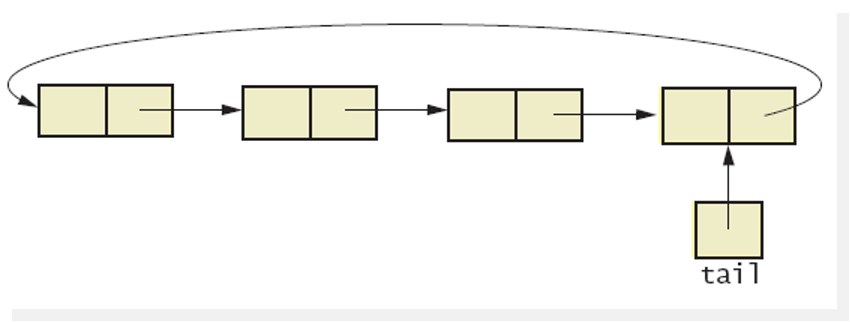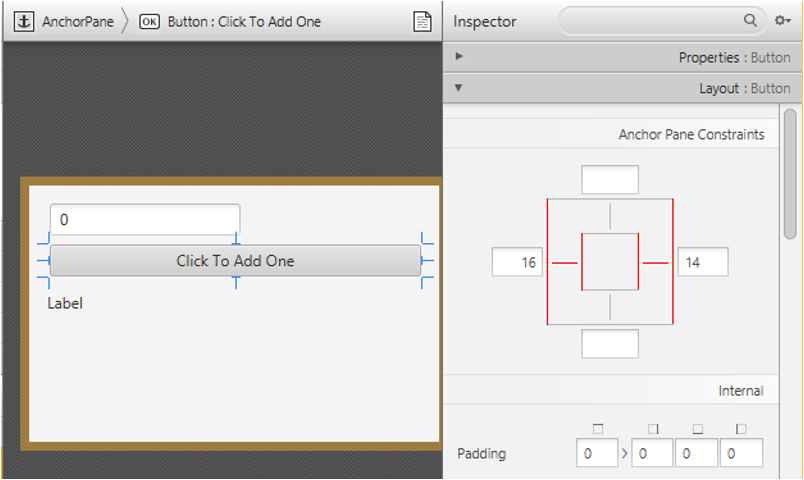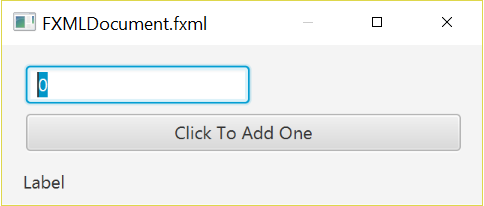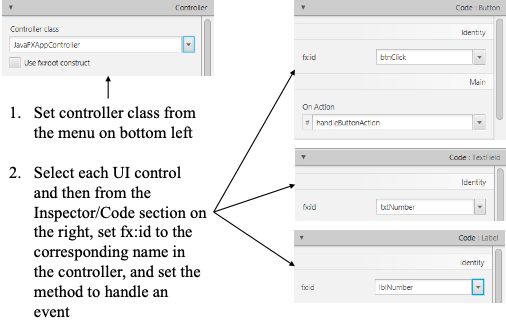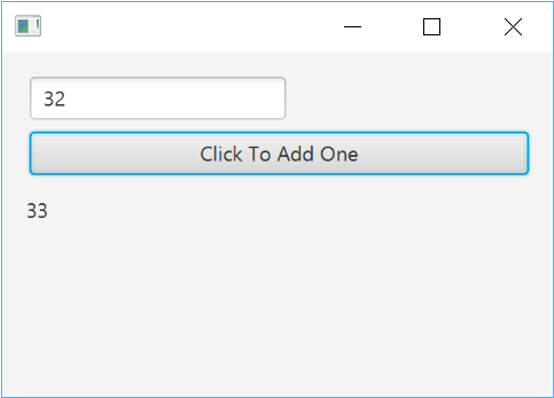Dynamic Data Structures and Generics
Savitch 12
Objectives
- Define and use an instance of
ArrayList - Introduction to the Java Collections Framework
- Describe general idea of linked list data structures and implementation
- Manipulate linked lists
- Use inner classes in defining linked data structures
- Describe, create, use iterators
- Define, us classes with generic types
Array-Based Data Structures: Outline
- The Class
ArrayList - Creating an Instance of
ArrayList - Using Methods of
ArrayList - Programming Example: A To-Do List
- Parameterized Classes and Generic Data Types
Class ArrayList
- Consider limitations of Java arrays
- Array length is not dynamically changeable
- Possible to create a new, larger array and copy elements — but this is awkward, contrived
- More elegant solution is use instance of
ArrayList- Length is changeable at run time
- Drawbacks of using
ArrayList- Less efficient that using an array
- Can only store objects
- Cannot store primitive types
- Implementation
- Actually does use arrays
- Expands capacity in manner previously suggested
- Class ArrayList is an implementation of an Abstract Data Type (ADT) called a list
- Elements can be added
- At end
- At beginning
- In between items
- Possible to edit, delete, access, and count entries in the list.
- Figure 12.1 Methods of class
ArrayList:
Creating Instance of ArrayList
- Necessary to
import java.util.ArrayList; - Create and name instance
ArrayList<String> list = new ArrayList<String>(20); - This list will
- Hold
Stringobjects - Initially hold up to 20 elements
- Hold
Using Methods of ArrayList
- Object of an ArrayList used like an array
- But methods must be used
- Not square bracket notation
- Given
ArrayList<String> aList = new ArrayList<String>(20);- Assign a value with:
aList.add(index, "Hi Mom");aList.add(index, "Yo Dad");
Programming Example
- A To-Do List
- Maintains a list of everyday tasks
- User enters as many as desired
- Program displays the list
- View source code, listing 12.1 class
ArrayListDemo
- When accessing all elements of an
ArrayListobject- Use a For-Each loop
- Use the
trimToSizemethod to save memory - To copy an
ArrayList- Do not use just an assignment statement
- Use the
clonemethod
Parameterized Classes, Generic Data Types
- Class
ArrayListis a parameterized class- It has a parameter which is a type
- Possible to declare out own classes which use types as parameters
- Note earlier versions of Java had a type of
ArrayListthat was not parameterized
The Java Collections Framework
- A collection of interfaces and classes that implement useful data structures and algorithms
- The
Collectioninterface specifies how objects can be added, removed, or accessed from aCollection - Brief introduction to just two implementations,
HashSetandHasMap- See other references for more info
HashSet Class
- Used to store a set of objects
- Uses the same
<>notation as anArrayListto specify the data type - View source code, listing 12.2 class
HashSetDemo - If you use
HashSetof you own class, it must overridehashCode()andequals()
HashMap Class
- Used like a database to efficiently map from a key to an object
- Uses the same
<>notation as anArrayListto specify the data type of both the key and object - View source code, listing 12.3 class
HashMapDemo - If you use
HashMapof your own class as key, it must overridehashCode()andequals()
Linked Data Structures: Outline
- The Class
LinkedList - Linked Lists
- Implementing Operations of a Linked List
- A Privacy Leak
- Inner Classes
- Node Inner Classes
- Iterators
- The Java
IteratorInterface - Exception Handling with Linked Lists
- Variations of a Linked List
- Other Linked Data Structures
Class LinkedList
- Linked data structure
- Collection of objects
- Each object contains data and a reference to another object in the collection
- Java provides a class to do this,
LinkedList- More efficient memory use than
ArrayList
- More efficient memory use than
- We will write our own version to learn the concepts of a linked list
Linked Lists
- A dynamic data structure
- Links items in a list to one another
-
Figure 12.4, a linked list
- Node of a linked list object requires two instance variables
- Data
- Link
- View sample class, listing 12.4 class
ListNode- This example has
Stringdata - Note the link, a reference to the type which is the class
- This example has
Implementing Operations of Linked Lists
- Now we create a linked list class which uses the node class
- View class, listing class
StringLinkedList - Note the single instance variable of type
ListNode - Note method to traverse and print the contents of the list
- Figure 12.5 Moving down a linked list
- Figure 12.6 Adding a node at the start of a linked list
- View linked-list demonstration, listing 12.6 class
StringLinkedListDemo
- Java automatically returns memory used by deleted node to the operating system.
- Called automatic garbage collecting
- In this context, not the significance of
NullPointerExceptionmessages - Consider the fact that our program has a reference (name) to only the head node
A Privacy Leak
- Note results of
getLinkin classListNode- Returns reference to
ListNode - This is a reference to an instance variable of a class type … which is supposed to be private
- Returns reference to
- Typical solution is to make
ListNodea private inner class ofStringLinkedList
Inner Classes
- Defined within other classes
- Example
1
2
3
4
5
6
7
8
9
public class OuterClass {
//Declarations of OuterClass Instance Variables
//Definitions of OuterClass Methods
private class InnerClass {
//Declarations of InnerClass Instance Variables
//Definitions of InnerClass Methods
}
}
- Inner class definition local to the outer-class definition
- Inner-class definition usable anywhere within definition of outer class
- Methods of inner and outer classes have access to each other’s methods, instance variables
Node Inner Classes
- We show
ListNodeas a private inner class- This is safer design
- Hides method getLink from world outside
StringLinkedListdefinition
- View new version, listing 12.7 class
StringLinkedListSelfContained
Iterators
- A variable that allows you to step through a collection of nodes in a linked list
- For arrays, we use an integer
- Common to place elements of a linked list into an array
- For display purposes, array is easily traversed
- View method to do this, listing 12.8 method
ToArray - Consider an iterator that will move through a linked list
- Allow manipulation of the data at the nodes
- Allow insertion, deletion of nodes
- View sample code, listing 12.9 class
StringLinkedListWithIterator
- Figure 12.7 The effect of
goToNexton a linked list
- Figure 12.8a Adding node to linked list using
insertAfterIterator
- Figure 12.8b Adding node to linked list using
insertAfterIterator
- Figure 12.9a Deleting a node
- Figure 12.9b Deleting a node
Java Iterator Interface
- Java formally considers an iterator to be an object
- Note interface named Iterator with methods
-
hasNext— returns boolean value -
next— returns next element in iteration -
remove— removes element most recently returned bynextmethod
-
Exception Handling with Linked Lists
- Recalled class
StringLinkedListWithIterator- Methods written so that errors caused screen message and program end
- More elegant solution is to have them throw exceptions
- Programmer decides how to handle
- Note class which does this, listing class
LinkedListException
Variations on a Linked List
- Possible to make a linked where data element is of any type
- Replace type String in definition of node class with desired data type
- Consider keeping a reference to last node in list
- Called the tail of the list
- Constructors, methods modified to accommodate new reference
- Consider having last link point back to head
- Creates a circular linked list
-
Figure 12.10 Circular linked list
-
Also possible to have backward as well as forward links in the list
- Doubly linked list
- Possible to traverse in either direction
- Figure 12.11 Doubly linked list
Other Linked Data Structures
- Stack
- Elements removed from ADT in reverse order of initial insertion
- Can be implemented with linked list
- Tree
- Each node leads to multiple other modes
- Binary tree leads to at most two other nodes
- Figure 12.12 Binary Tree
Generics: Outline
Basics of Generics
- Beginning with Java 5.0, class definitions may include parameters for types
- Called generics
- Programmer now can specify any class type for the type parameter
- View class definition, listing 12.11 class `Sample<T>1
- Note use of
<T>for the type parameter - Legal to use parameter T almost anywhere you can use class type
- Cannot use type parameter when allocating memory such as
anArray = new T[20];
- Cannot use type parameter when allocating memory such as
- Example declaration:
Sample <String> sample1 = new Sample<String>();
- Cannot specify a primitive type for the type parameter
Programming Example
- Generic linked list
- Revision of listing 12.5
- Use type parameter E instead of String
- Note similarities and differences of parameterized class with non-parameterized classes
- View generic class, listing 12.12 class
LinkedList <E> - View demo program, listing 12.13 class
LinkedListDemo
Graphics Supplement
- The Scene Builder can simplify the creation of JavaFX GUI applications by providing a graphical way to arrange the components on a form
- Binaries of the Scene Builder available from Gluon Labs
- http://gluonhq.com/labs/scene-builder
- Use in conjunction with an IDE such as NetBeans or Eclipse
- Consult your IDE documentation for further information on integration
- JavaFX applications split up into three files that separate the layout from the code logic
- FXML file — contains information about the presentation and layout of nodes but no code for what happens when events occur
- Application file — Java source code that contains the start method and typically loads the FXML file
- Controller file — Java source code that implements event handlers that respond to the UI controls
Sample FXML File
- Can build the FXML file by hand, similar to HTML. Example File:
- This file is what is built automatically for us by the scene builder!
Scene Builder UI
- Drag controls from the library to the view in the middle
- The AnchorPane allows us to anchor the sides of a control to edges in the pane
- Anchoring a Button to the left and right sides of the pane using Scene Builder 2.0
- Preview Window
The JavaFX Application Class
- This class loads the FXML document in the start method
- It is typically created automatically by the IDE
- View JavaFX application class, listing 12.14 class
JavaFXApp
The JavaFX Controller Class
- This class contains event handlers for controls in the GUI
- We need to link variables in the controller to the control in the Scene Builder
- Add the @FXML annotation above the class variable and event handler that corresponds to the control in the Scene Builder
- E.g. for a Button the Scene Builder we would add this in the controller class
1
2
3
4
5
6
7
8
9
@FXML
private Button btnClick;
@FXML
private void handleButtonAction(ActionEvent event) {
int val = Integer.parseInt(txtNumber.getText());
val++;
lblNumber.set(Intger.toString(val));
}
- You would use the variable name of your choice
The JavaFX Controller Class
- The class variable and event handler method need to be linked to the corresponding component in the Scene Builder
- View JavaFX controller class, listing 12.15 class
JavaFXAppController
- Sample Output of Final Program
Summary
- Java Class Library includes
ArrayList- Like an array that grow in length
- Includes methods to manipulate the list
- Java Collections Framework contains many classes to store and manipulate objects
- Linked list data structure contains nodes (objects)
- Linked data structure is self-contained by making the node class an inner class
- Variable or object which allows stepping through linked list called an iterator
- Class can be declared with type parameter
- Object of a parameterized class replaces type parameter with an actual class type
- Classes
ArrayList,HashSet,HashMap, andLinkedListare parameterized classes - The Scene Builder provides a graphical way to construct JavaFX applications.

